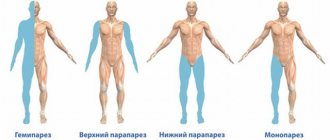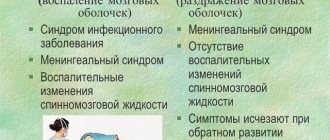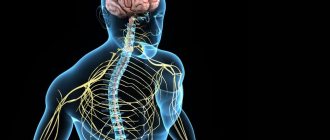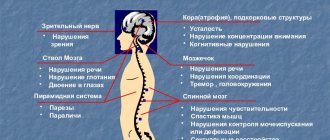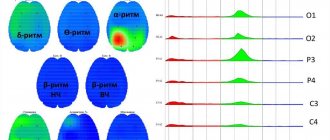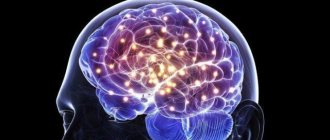Experienced smokers feel worse after quitting the bad habit. When long-time smokers quit smoking, they experience headaches for the first few months. This is due to psychological and physiological changes. Some people reach for a cigarette again, drink pills containing caffeine, or drink alcohol, thereby provoking a stroke.
Doctors will tell you what to do if you continue to have a headache for five days after quitting smoking. They will help relieve the stress that a smoker experiences during the period of nicotine withdrawal without complications. Will help you adapt to a healthy lifestyle.
Nicotine is a legal drug
It's hard to wrap your head around it, but nicotine is a drug. Cigarettes are sold everywhere, and only in recent years have restrictions on the sale of tobacco products been tightened: it has become more difficult for teenagers to buy them; in stores, packs of cigarettes are hidden from prying eyes in special locked cabinets. Naturally, it is hard to believe that the drug can be sold in the open.
The method of drug use also plays an important role in the frivolous perception of tobacco addiction. The cigarette is easy to smoke. Even a Spartan meal for alcoholics requires minimal preparation, and you don’t need company to smoke a cigarette; you can even ask the first person you meet for a lighter. And the process itself seems harmless and safe. True, for the time being.
Withdrawal syndrome when quitting smoking
After a certain period of regular tobacco smoking, a person suddenly discovers that he has become dependent on this process.
When quitting smoking, he begins to experience obvious inconveniences. They are primarily expressed in psychological discomfort. Smokers describe this condition in different ways, but, as a rule, it is an inability to concentrate and irritability. There are also physiological manifestations that accompany nicotine withdrawal.
This whole set of unpleasant and painful symptoms is called withdrawal syndrome. It is a sign that the smoker has developed a persistent physical dependence on tobacco, or more precisely on its psychoactive component - nicotine.
Nicotine withdrawal
Chronic smoking is defined in medicine as tobacco or nicotine addiction.
Nicotine is a psychoactive substance that causes physical dependence at the level of neurotransmitters, causing the production of dopamine in the brain. Dopamine is responsible for joy, pleasure, determination. A drop in dopamine levels stimulates a person to actively search for ways to increase it. Since the smoker’s brain experiences a constant deficiency of this neurotransmitter, only the intake of nicotine in the body raises this level. When dopamine levels drop, a person experiences feelings of anxiety, restlessness, and an automatic urge to smoke.
How does nicotine affect the body?
When smoking cigarettes, nicotine acts on the central nervous system of a person, which is where the feeling of a surge of strength, vigor, and lifting the mood arises. The psychoactive substance affects the acetylcholine receptors of the brain, which provokes an unnatural release of adrenaline.
This is how a conditioned reflex arises; a connection is formed in the psyche between smoking a cigarette and receiving pleasure. Later, when the addict wants to get rid of the disease, it will be very difficult to break it.
In the case of smoking, this reflex arc causes harm to the body. However, it is worth remembering that all rewarding reflexes are formed in this way, and this can be used not only for harm, but also for good. In the case of sports activities, the body itself rewards us with the release of joy hormones. But we can give them to ourselves consciously with the help of natural pleasures. Thus, knowledge about the formation of reflexes makes it possible to control and shape your life according to your own rules.
But in the case of smoking tobacco, the opposite happens. The release of hormones is provoked by force; the body does not receive any real benefit or pleasure. But the deceived brain still adds smoking to the list of useful and pleasant actions that bring satisfaction. This is a stable psychological dependence on a drug.
How does a person feel when quitting smoking?
When a dependent person begins to smoke regularly, a physical craving for nicotine is added to the psychological dependence.
During the period of quitting smoking, the patient experiences a strong desire to smoke, psychological discomfort is expressed in anxiety, irritability, and excessive psychological stress. The addict becomes depressed, he can be aggressive and unrestrained, it is difficult for him to concentrate on anything because thoughts about smoking constantly creep into his head.
Withdrawal syndrome when quitting smoking is an unpleasant condition from a psychological point of view, however, this is not all the tests that a smoker faces.
What not to do.
No matter how much your head hurts, you should never do a few things:
- starting to smoke again - starting to smoke again after trying to quit - this means subjecting your body to double stress;
- try to “stimulate” the body with alcohol, strong coffee or other energy drinks, since a sharp change in vascular tone can cause not only increased headaches, but also cause a stroke or heart attack;
- for the same reason, you should not take any analgesics or other drugs without a doctor’s prescription;
- Also, you should not try to stoically “endure” the pain without paying attention to it; such neglect of your health can cause the most unpleasant consequences.
Quitting smoking is not as difficult as it seems at first glance; such a decision not only deserves deep respect, but also becomes one of the most important steps to strengthen your health and longevity, and for this you can put up with the need to endure a headache for several days.
Physiological manifestations of withdrawal syndrome
Let's not forget that nicotine is a real poison. It poisons the human body and causes great harm to it.
During the period of nicotine withdrawal, the body also has a hard time. A smoker develops severe headaches and may develop seizures. A classic symptom of abstinence, characteristic of many addictions, hand tremors, also awaits a nicotine addict.
The functioning of the gastrointestinal tract is abnormal. On the one hand, there is an increase in appetite, on the other hand, the smoker suffers from nausea. Sometimes the patient may experience constipation. A rapid heartbeat is accompanied by sharp changes in blood pressure, shortness of breath appears, as if the person does not have enough air when breathing. A state of general weakness and weakness complements this bouquet of symptoms.
And the method of using the drug itself harms the respiratory system, so when you quit smoking, a strong cough occurs, and ulcers may appear in the mouth. During the period of withdrawal syndrome, a smoker's overall level of immunity decreases. The immune system decides that it is possible to “relax”, because so many poisons no longer enter the body. Together with the damage caused by smoking to the respiratory organs, this leads to bronchitis, laryngitis, and rhinitis. When a person smokes, his bronchioles are in a state of prolonged spasm; accordingly, during the period of withdrawal syndrome, they expand, and infections penetrate through them more easily.
Treatment of nicotine withdrawal syndrome
We have described a number of physical and psychological symptoms that accompany smoking cessation. This is how the body adjusts to a normal mode of operation without the use of nicotine. This is a lot of stress for a person, for his body and psyche. Therefore, few people can go through the pangs of nicotine withdrawal on their own. The best thing to do in this case is to consult a doctor.
After all, it can be a shame when a patient, having endured the most painful first days or weeks of nicotine withdrawal, then smokes a cigarette again. So he dooms himself to walking in circles.
Modern narcology offers many ways to combat nicotine addiction, varied and effective. Why not make it easier for yourself to quit smoking?
Why do you feel tired?
Biostimulation helps relieve emotional tension and stress. By changing your diet, you can increase the proportion of sweet fruits and include honey. These sweets have a lower glycemic index than sugar. They increase the level of serotonin (the hormone of joy), and your head will hurt less. Products containing caffeine should not be abused. They give a temporary effect, then increase fatigue. Fermented milk products restore strength well, they contain a lot of protein and stimulate digestion. The stomach will not hurt, intestinal function will be normalized.
Why is treatment for nicotine addiction necessary?
When smoking, nicotine interferes with the body's metabolic processes and becomes an integral part of metabolism. Every cell of the body, even indirectly, experiences its impact. First of all, of course, nicotine addiction has an effect on the central and peripheral nervous systems of a person.
Nicotine acts on brain receptors, unnaturally stimulating nerve cells, stimulating the endocrine glands, in particular the pituitary gland. Subtle and complex metabolic processes are stimulated excessively, the body gets used to this state, and it becomes normal for it.
In fact, a smoker who has developed a persistent addiction does not smoke for pleasure, but to return to his “normal” state.
Naturally, such deep attachment is not easily overcome. Withdrawal syndrome when quitting smoking can break anyone, so the body needs to be helped to get through this difficult period, especially since there are plenty of funds for this today.
Treatment of dizziness in former smokers
The cause of the discomfort is vascular spasms, residual effects of brain damage from nicotine. For frequent migraine attacks, which are accompanied by a faint state and disorientation in space, psychotherapy sessions help. In severe cases, if dizziness is intense, medications that improve cerebral circulation are prescribed. When your head continues to feel dizzy, further examination is required.
Interesting: Can a computer give you a headache and what to do if cephalgia occurs?
Treatment with drugs
When treating nicotine addiction, specialists quite often turn to medicinal treatment methods. It should be noted that in essence these methods are coding for smoking.
By themselves, they cannot cure addiction, but they give the patient the opportunity to live without cigarettes and appreciate the benefits of a healthy lifestyle. Secondly, drug blocking of addiction in combination with psychotherapeutic treatment methods can cure the disease completely. In addition, medications alleviate or relieve withdrawal symptoms when quitting smoking, and a person goes through the period of adaptation to life without cigarettes more easily.
What medications are used to relieve nicotine addiction? They can be divided into two types of drugs. Some are replacement therapy and simulate the flow of nicotine into the body. The most common of these products is the anti-nicotine patch.
The person who uses the patch does not experience withdrawal symptoms. If the remedy is chosen correctly, then the body is easy to deceive; the body does not even suspect that you no longer smoke. What does it mean to choose correctly? It is important to consider how strong cigarettes you smoke, in what quantity and how often. In other words, the patch should imitate your smoking regimen as accurately as possible.
It is best to select an anti-nicotine patch with the help of a doctor, because this very convenient and effective remedy may not help you only because of the wrong dosage. In addition to the patch, there are also sprays, chewing gums, and mouth rinses that have a similar effect. Their disadvantage is that you can violate the regimen and forget to use them, which will negate the effect of the treatment. In this regard, the patch is the most convenient solution.
There are drugs that block receptors in the brain, those that respond to nicotine entering the body. Thus, the smoker does not experience any sensations from the smoking process, which makes it meaningless.
A fairly large group of drugs works to reduce cravings for tobacco. In fact, these medications relieve the unpleasant psychological manifestations of withdrawal symptoms, which will allow the patient to control their behavior.
Please note that many drugs have side effects. In addition, for the correct choice of medication, it is necessary to take into account the specific medical history of the disease. That is why the choice of treatment for smoking should be entrusted to a professional so that it brings benefit to your health and not additional harm.
I quit, I don’t smoke!
You quit smoking, congratulations!
Here you will find out what happens in the body of a man or woman after quitting smoking by hour, day, month and year. We will also talk about all the changes in the body after a person quits smoking, about the cleansing and restoration of organs during all these time periods.
Withdrawal syndrome and causes of addiction
A person who has given up the harmful habit of smoking often encounters difficulties in the first days of giving up, holding on to nerves and constant mood swings for one or two days, after which he stops his endeavors.
The reason is mainly due to nicotine, which has long been a substitute for the brain's main inhibitory neurotransmitter, acetylcholine. It, in turn, performs a normalization function in the central nervous system.
If you are stressed at work or in a nervous situation, the production of acetylcholine (AC) increases and stress levels decrease. On the contrary, an overly active state of the central nervous system is an abnormal phenomenon, so AC inhibits brain activity, bringing it back to normal.
All this time - until the day of quitting smoking - the function of normalizing brain activity was performed by nicotine through cigarettes or alternative means, such as nicotine gum, sprays, patches, etc.
After quitting cigarettes, the central nervous system no longer receives the grafted normalizer nicotine, but at the same time, the natural neurotransmitter acetylcholine is no longer produced in the required quantity, and the person begins to experience abstinence syndrome, or withdrawal syndrome, which is accompanied by the processes of cleansing and restoring the body of the quitter.
What is the characteristic of withdrawal syndrome?
- Irritability
- Aggressiveness
- Drowsiness
- Depressive state
- Sudden mood swings
Stages of cleansing the body after quitting smoking:
20 minutes later.
20 minutes after smoking a cigarette, the heart rate decreases and returns to normal, and blood pressure begins to normalize. The body's activity increases. Renal function increases with increasing systolic pressure.
2 hours.
Two hours after the refusal, the kidneys begin to cleanse the blood of nicotine and remove it from the human body.
8 ocloc'k.
After eight hours without cigarettes, by stopping the flow of cigarette smoke into the lungs, the level of oxygen in the blood increases, and the level of carbon monoxide is halved. The process of removing nicotine from the body continues, which leads to the onset of withdrawal syndrome.
12 hours.
After half a day of quitting smoking, the smoker’s shortness of breath decreases and breathing becomes easier, since during this time the blood is completely cleared of carbon monoxide. The oxygen level in the blood increases to normal.
24 hours
A day after quitting smoking, withdrawal syndrome begins with all its symptoms, since nicotine is completely removed from the body, but the production of acetylcholine is still at an insufficient level.
Decreased heart rate
In people whose smoking experience exceeds 10 years, after quitting nicotine, there is a strong decrease in heart rate at rest and can drop to values of 40-50 beats per minute.
In a smoker, the effects of nicotine on the body lead to a chronic increase in heart rate, which negatively affects the health of the cardiovascular system.
When you quit smoking, the factor of artificial acceleration of heart muscle contractions due to nicotine disappears, and at first the heart rate may decrease significantly. But don’t panic, your heart rhythm will return to normal within a few days.
2 days
This is the second day you have not poisoned your body with poison. Cigarette smoke contains not only nicotine and tar itself, but also hundreds of substances that enter the lungs as a result of the combustion of various additives in tobacco, the paper itself and glue. All these substances are extremely toxic and have an extremely destructive effect on mucosal cells.
On the second day of quitting smoking, the bronchi begin to get rid of accumulated mucus, and the ciliated epithelium is gradually freed from soot. A person who quits smoking begins to have a strong cough with dark flakes being coughed up - a natural process of lung recovery.
3 days
The restoration of the bronchial mucosa and ciliated epithelium continues, providing the blood with more oxygen.
A person who quits smoking has a strong appetite, since nicotine, before quitting smoking, blocked the hunger center, which in a healthy person functions as a notification of hunger and satiety with food. This function without nicotine will eventually restore its functioning and the feeling of eternal hunger will disappear.
Due to the normalization of blood pressure and increased oxygen levels, the enrichment of brain cells with blood increases sharply, which leads to dizziness and tinnitus.
4 days
Blood circulation is normalized, the rush of blood to the brain becomes less strong. The gastric mucosa is gradually restored, and pancreatic secretion improves. Smokers note an increase in wet cough with the discharge of viscous sputum.
5 days
The functioning of taste buds improves, the smoker begins to feel the taste of food. The tone of blood vessels is close to normal levels. The cough intensifies, the color of the sputum becomes dark brown - this is how the bronchi and lungs are cleared of accumulated soot.
6 days
The activity of the ciliated epithelium is almost restored, the lungs continue to actively produce mucus. When a person coughs, sputum with streaks of blood comes out, as if there is a mucous lump in the throat. Irritability intensifies, the smoker increasingly wants to return to his previous life with the presence of tobacco in it.
7 days
Harmful nicotine is completely removed from the body. Some tissues and cells are almost completely renewed; a new epithelium, unfamiliar with nicotine poison, is emerging in the stomach and intestines. The liver begins to produce endogenous nicotine, so the physical craving for smoking practically does not bother the person. The cough and feeling of congestion in the throat do not go away.
8 days
The olfactory and taste buds come to life, so food acquires a normal taste and smell, appetite increases and, as a result, body weight may increase.
The blood vessels of the brain are still unstable, and therefore a person may be bothered by pressure surges and dizziness. Aggression and depression are reduced, but getting rid of the psychological craving for cigarettes is still far away.
9 days
The gastric mucosa has been almost completely restored, and the secretion of basic enzymes begins. Restorative processes continue in the intestines and bronchopulmonary system. A person experiences pain in the lower abdomen and changes in stool. At this time, colds, stomatitis, and herpes may begin.
10 days
The process of restoring the immune system begins. The cough continues due to the regeneration process of the pulmonary system. When coughing, lumps of mucus with an unpleasant odor may be coughed up - this is coughing up mucus from the bronchi or gradually clearing the tonsils of the plugs that have accumulated in them. The smoker’s internal state leaves much to be desired - he is depressed, his internal motivation may be shaken. These days, more than ever, the support of family is needed.
11 days
The tone of arterioles—small vessels carrying arterial blood—gradually returns to normal. The brain is actively supplied with oxygen, as a result of which dizziness continues, trembling of the fingers and headache may appear. Appetite increases. The craving for smoking increases, bringing with it irritability, aggressiveness or tearfulness.
12 days
Improving blood circulation and vascular tone leads to increased cell nutrition. The complexion is normalized, and intestinal activity is almost restored. The blood cells responsible for immunity have been renewed twice and are ready to fully protect the body from viruses and bacteria.
13 days
Enhanced renewal of skin cells continues. The physical condition is still unstable - a person may suffer from headaches, malaise, and pressure changes continue. This is due to the fact that the nervous system has not gone through a full recovery cycle.
14 days
Regeneration of the bronchial mucosa ends. The restoration process of red blood cells is in full swing; the supply of platelets, which were not affected by nicotine poison, has already been almost completely renewed. The painful cough gradually subsides, the complexion becomes more even, and the dullness goes away. At this time, many smokers decide to taste the cigarette again, which throws them back to the initial stage of regeneration.
1 month
During the first month after quitting smoking, you may have problems sleeping. A person may wake up several times during the night with a strong desire to smoke, and often break out in cold sweat. All these are normal and natural consequences of quitting doping in the form of nicotine. For the most part, it depends on your smoking history.
If a person has previously used cigarettes for only a few months, then such sensations will occur literally several times. If you smoke for ten years, then restless sleep will occur for several weeks, or even a whole month.
For 2 - 3 months
Dramatic changes in the body after quitting smoking occur from the second month. The brain gradually gets used to working without “nicotine doping,” and at the same time, toxins are actively eliminated through the skin, breathing, and along with gastrointestinal products.
At this moment, skin cells have already gone through 3-4 cycles of regeneration and renewal, so a blush appears on the face, pale spots disappear, and the number of pimples, acne, blackheads, and inflamed sebaceous glands significantly decreases.
Even the hair at this moment becomes much more visually attractive. Fragility and split ends disappear. Such changes will be especially pleasant for girls. Quitting smoking affects them more noticeably.
After 2-3 months of quitting smoking, the lungs continue to recover, but the process has not yet reached the so-called acini. These are the very cells that are a kind of building material. Their regeneration can take 4-12 months, depending on the length of time the smoker has been smoking.
In the third month, the functioning of the gastrointestinal tract changes dramatically. Metabolism finally returns to normal, weight gain and sharp loss stop, appetite becomes healthy. After all this, the body begins to more actively absorb proteins. Even if a former smoker does not exercise, his muscle mass increases and fat folds in the abdomen, chest, and thighs disappear. Heart tone and blood pressure also return to normal, which is especially noticeable by hypertensive patients.
But even after the third month, withdrawal symptoms persist. An occasional smoker feels a craving for tobacco. And this is an extremely dangerous period, since just one cigarette will trigger reverse restructuring processes in the body. Under no circumstances should you try tobacco in an attempt to prove that the former smoker is no longer dependent on it in any way and can afford to smoke 1-2 cigarettes without any consequences. This is one of the most common mistakes, psychologists say. All this indicates that brain restructuring during this period is still not complete and continues.
6 months. Six months without cigarettes
The blood environment is completely normalized. Now the blood carries oxygen in the body without any inclusion of tobacco toxins. In internal organs, cells are actively recovering from nicotine stress; the laboratory composition of lymph is no different from what is characteristic of an absolutely healthy and non-smoking person. The cough practically stops, sleep becomes the same as before.
Starting from the 5th month, the liver completes the regeneration process, which was forced to process all the toxins entering the body with tobacco smoke. By the way, for the same reason, those who have given up a bad habit are not recommended to take even minimal doses of alcohol for a certain period. This will only slow down the process of liver cell recovery.
By the way, for 5-6 months, experts recommend including increased physical activity. This will facilitate the rapid removal of toxic mucus and tar from the lungs. The opinion that tars will never be removed from the respiratory system is erroneous. They come out and are rejected, like any foreign body. True, this will take more than one year. But by the 6th month, approximately 80% of it will already be released along with the cough. Sometimes the color of this mucus will take on a bloody tint - this is normal.
In this way, damaged alveoli, which constantly retain CO2 atoms, are destroyed. By the 6th month, the desire to smoke or try tobacco again almost completely disappears and can only make itself felt after drinking alcohol.
10 months
Why is there an emphasis on 10 months after quitting smoking? Because then the majority of previously heavy smokers begin a full-fledged brain restructuring. For this reason:
- they often dream that they smoke;
- there is a spontaneous desire to smoke;
- sleep is partially disturbed;
- A particularly strong desire to take a long drink arises in the morning.
Psychologists call this condition nicotine convulsions. The main thing is not to give in to desire. This entire period is explained by a sharp activation of those parts of the brain that are responsible for obtaining satisfaction. They also give the command to return to a habit that is supposedly beneficial for the body.
A kind of self-deception. If you endure all this, your body will no longer remember nicotine addiction. A former smoker will feel the same as a person who has never smoked (meaning emotionally).
At 10-11 months, the vocal cords are restored, they become much easier to control, causing the voice to take on a slightly higher tone.
The hoarseness inherent in smokers completely disappears; a large amount of mucus no longer forms in the throat, which protected the epithelium from toxins.
During the same period, the yellowness on the teeth, which is why smokers’ breath constantly smells bad, completely disappears. True, only those who do not abuse coffee drinks will be able to notice this. Tartar, of course, will not completely disappear, but it will become noticeably smaller. During this period, it is recommended to visit the dentist’s office and eliminate all dental problems that developed during the years of active smoking.
1 year
Quitting smoking after 12 months can be fully considered a success. According to the survey, only 25% of former smokers feel a certain craving for tobacco, but the risk of relapse is extremely low - only 0.2-0.5%. The process of regeneration of lung tissue is almost completed in the body, keratinized skin becomes absolutely healthy (we are talking about hair and nails).
Male reproductive function is completely restored, potency increases, and the feeling of orgasm increases. This occurs due to the restoration of normal receptors in the prostate, as well as the nerve endings that are located on the penis itself.
At the same time, the development of “tobacco” diseases is radically reduced. For example, the probability of lip cancer is only 4% higher than in a healthy person (previously - 4 times). The same applies to diseases of the cardiovascular system, gastrointestinal tract, and lungs. It can be argued that the body has finally completed the regeneration of all damaged tissues. However, a cough can still make itself felt, as can shortness of breath. They remain at the same reflex level.
Another former addict feels disgust for every smoker. That is, the body, like the brain, generally ceases to perceive nicotine and tobacco smoke as a product for satisfaction. No matter how many times a person is among smokers during this period, there will be no strong desire to pick up a cigarette.
2 years
In the second year without tobacco addiction, cough, shortness of breath, and sudden surges in blood pressure during physical activity completely disappear (in those who previously suffered from a similar disorder). The main thing is that the process of feeding the brain is completely restored, due to which the risk of stroke becomes no higher than that of a person who has never taken up cigarettes in his life. The rare desire to smoke remains only among the most avid smokers, who have not given up their habit for 25-40 years.
The body becomes so weaned from nicotine that even one single cigarette will be perceived as the first in life. That is, all this will be accompanied by a severe cough, dizziness and even a bout of nausea. This also applies to mental health. By the way, in the second year the female body is also completely cleansed of toxins, and if you have plans for pregnancy, you can safely implement them.
The fact that the girl previously abused tobacco will in no way affect the child. This also applies to men in a certain way. That is, the sperm becomes the same as that of a non-smoker.
In addition, the body normally perceives any physical activity. They also help speed up metabolism, however, unlike the period when nicotine was used, accelerated digestion of food is accompanied by normal protein processing. Smokers often experience gastrointestinal upset, since food simply cannot be digested normally.
Many people don’t even realize that such a seemingly harmless habit causes so much damage to the body. A complete recovery will take 2 years at best. However, general improvement occurs immediately, literally from the first day without nicotine.
Psychotherapeutic treatment
If a person wants to get rid of the very root of the disease, from internal psychological causes, a psychotherapist or psychologist will help him with this. This process may take several weeks or months, but it is worth it.
With the guidance of a professional, you will understand what exactly pushed you down the path of addiction and you will be able to get rid of bad habits of thinking and attitudes. A specialist will help you get used to life without the use of artificial stimulants, using psychotherapeutic techniques for treatment.
Strength of will
Relying only on willpower and your own endurance when trying to quit smoking is wrong. Failure in this case undermines self-confidence and makes subsequent attempts to quit smoking much more difficult. Trying to quit smoking through abstinence alone, a person is left without support, faces severe withdrawal symptoms, and increases the risk of returning to cigarettes. It is important to understand that smoking is not a bad habit that you can get rid of with willpower, but a disease. It requires special treatment: with medication support, psychotherapy, and lifestyle correction. Only with such treatment will a person be able to quit smoking forever, and not for a while.
Treatment of nicotine addiction in
You can receive treatment for nicotine addiction in our drug treatment center. The advantage of this choice is that we cooperate with the best clinics in Russia and can offer a large number of methods for quitting smoking. As you have already noticed, an individual approach in treating this addiction is extremely important.
Most smokers delay seeing a doctor, either postponing solving the problem for an indefinite period of time, or making numerous fruitless attempts to get rid of the disease on their own. This, of course, is the right of every person, it is even spelled out in the laws of the Russian Federation. But your body suffers irreversible damage. I wouldn’t want to scare anyone, however, during this time you may develop some serious disease, sometimes incurable.
Therefore, there is no need to take risks; now treatment for addiction can be carried out gently and painlessly if you use the qualified help of a narcologist. You can learn more about the treatment of nicotine addiction from our consultants at any time. The toll-free call center number is listed on the page, call and ask your questions, because this does not oblige you to anything.


